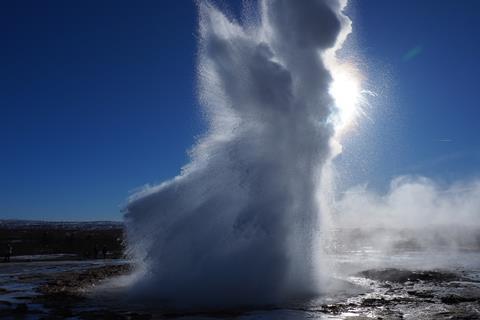An international research team reveals a first in-depth look at Omnitrophota – one of the world’s oldest and tiniest bacteria.
These nano-sized bacteria, first discovered based on short fragments of DNA just 25 years ago, are common in many environments around the world but have been poorly understood, until now.

An international research team has produced the first large-scale analysis of more than 400 newly sequenced and existing Omnitrophota genomes, uncovering new details about their biology and behaviour. The team’s findings are reported in the March 16 issue of the journal Nature Microbiology.
Entire phylum
“We now have the most comprehensive view to date of the biology of an entire phylum of microorganisms and the surprising role they play in the Earth’s ecosystems,” said UNLV microbiologist Brian Hedlund, the study’s corresponding author.
“There is a finite number of major lineages of life on our planet, and it’s exciting to learn more about organisms that pre-date plants and animals and have been essentially hidden under our noses.”
The tricky thing with Omnitrophota is that they’re still largely considered microbial dark matter, which means they exist in nature but can’t yet be cultivated as single species in lab studies. Just two species have been microscopically observed, and only very recently.
Genome comparison
To present a comprehensive picture of their biology, scientists compared 349 existing and 72 newly mapped genomes of Omnitrophota. This included a review of publicly available data and new samples collected from geothermal environments, freshwater lakes, wastewater, groundwater, and springs located around the world.
The team observed that, in most cases, Omnitrophota measure less than 450 nanometers, which places them among the smallest of all known organisms. They also displayed genetic markers consistent with symbiosis - possibly as predators or parasites of other microorganisms, which suggested they would have high metabolic rates. Indeed, when isotope uptake was measured as a proxy for metabolic activity, Omnitrophota were hyperactive.
“Despite how little we collectively knew about Omnitrophota, they’ve long been cited by microbial ecologists. Our goal was to finally drag this lineage out of the dark,” said Cale Seymour, a recent UNLV master’s graduate and the study’s lead author.
“The more we learn about their energy conservation pathways and possible lifestyles, the closer we get to our goal of cultivating them in the lab and bringing them into the light.”
The study, “Hyperactive nanobacteria with host-dependent traits pervade Omnitrophota,” appeared n the journal Nature Microbiology. Additional collaborating organizations include Bigelow Laboratory for Ocean Sciences, the University of North Alabama, the U.S. Department of Energy Joint Genome Institute, Desert Research Institute, Northern Arizona University, Sun Yat-sen University, University of Science and Technology of China, and University of Queensland.







No comments yet